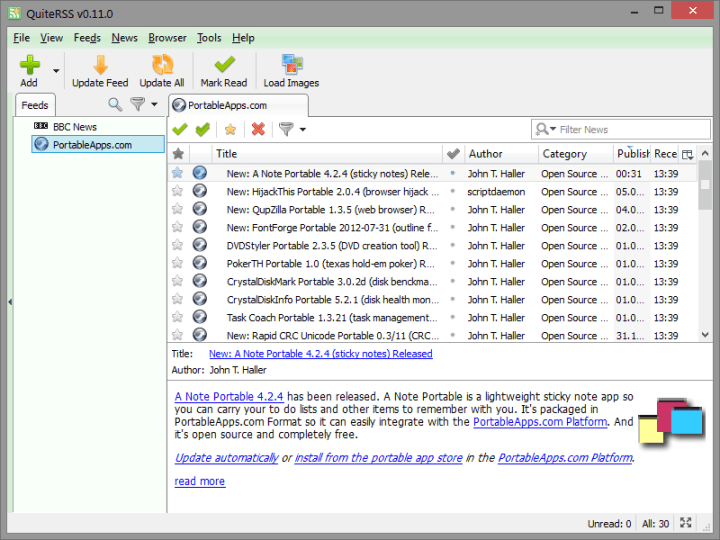
- MICROSOFT RSS READER WINDOWS 10 WHILE IT
- MICROSOFT RSS READER UPDATE THE USE
- MICROSOFT RSS READER CODE INTO THE
Microsoft Rss Reader Windows 10 While It
Microsofts IDE for Windows, Visual Studio, has an open source plugin named.Search Search Microsoft.com. RSS reader tutorial (Rust for Windows with VS Code)To subscribe to this RSS feed, copy and paste this URL into your RSS reader. To view RSS Feeds in Edge, you have to click on the More actions icon at the upper right corner, and choose the. The feature of RSS feeds reading is available on Internet Explorer 11 on Windows 10 while it is a model of simplicity. However, the Microsoft Edge Browser still doesn’t support Windows RSS feeds Platform since now, so you can not import an OPML file to turn it into RSS reader.
Get a simple overview of your RSS and Atom feeds in the toolbar The easiest way to follow news from your favorite websites and blogs. News-And-Weather 16127 (13) Get. Feeder - RSS Feed Reader Feeder. Home/ News-And-Weather/ Feeder - RSS Feed Reader.
Cargo new rss_readerNow—again via Cargo—we're going to create a new sub-project named bindings. We now have an active Nmap Facebook page and Twitter feed to augment the.Now let's try out Rust for Windows by writing a simple app that downloads the titles of blog posts from a Really Simple Syndication (RSS) feed.Launch a command prompt ( cmd.exe), and cd to a folder where you want to keep your Rust projects.Then, via Cargo, create a new Rust project named rss_reader, and cd into the project's newly-created folder. The previous topic introduced Rust for Windows, and the windows crate.They give an overview of NSE, use it to explore Microsofts global network.
Let's work on the bindings library first.In VS Code's Explorer, open the bindings > Cargo.toml file.A Cargo.toml file is a text file that describes a Rust project, including any dependencies it has.Right now, the dependencies section is empty. Cargo new -lib bindingsMaking bindings a nested crate means that when we build rss_reader, bindings will be able to cache the results of any bindings we import.Then open the rss_reader project in VS Code. We'll be consuming that crate from within the rss_reader project, as we'll see. At build time, the bindings library sub-project will build into a crate (which is Rust's term for a binary or a library).
Type in the name build.rs, and press Enter. In VS Code, right-click the bindings folder, and click New File. Set the version number to whatever the latest version is—you'll be able to see that on the web page for the windows crate.Now we can add the build script itself this is where we'll generate the bindings that we'll ultimately rely on. That allows Cargo to download, build, and cache Windows support as a package. # bindings\Cargo.tomlWe've just added a dependency on the windows crate, both for the bindings library and for its build script.
But here we're asking for bindings to be generated only for the particular types we specify (such as SyndicationClient). We could have asked for an entire namespace (with Windows::Web::Syndication::*). Winmd files, and generating bindings for selected types directly from metadata. // bindings\build.rsWindows::Foundation::Collections::IVector,Windows::Foundation::,ISyndicationText, RetrievalProgress, SyndicationClient, SyndicationFeed, SyndicationItem,The windows::build! macro takes care of resolving any dependencies in the form of.
Other types are part of the windows crate itself. So in the build macro we also include the definition for Windows::Foundation::Uri so that we can call that method. For example, we'll be using a method of SyndicationClient that expects a parameter of type Uri.

Microsoft Rss Reader Code Into The
There's the Uri type that we mentioned earlier.To create a new Uri, add this code into the main function. // src\main.rsWindows::Web::Syndication::SyndicationClient,The use declaration shortens the path to the types that we'll be using. Add this code to the beginning of main.rs.
// src\main.rsThe new function is Rust's equivalent of the default constructor.Now we can use the SyndicationClient object to retrieve the feed. For more info about this feature of Rust, see The ? operator for easier error handling.To download this RSS feed, we'll create a new SyndicationClient object. That means we don't have to do a bunch of manual error handling for this simple example. To save on typing, we do that to make use of Rust's error-propagation and short-circuiting logic. Windows::Result helps us with error propagation, and concise error handling.You can see the question-mark operator at the end of the line of code that creates a Uri. This will make things easier, as it's common to deal with errors from operating system (OS) APIs.
There are also Debug and Run commands embedded inside the text editor. // src\main.rsNow let's confirm that we can build and run by clicking Run > Run Without Debugging (or pressing Ctrl+F5). Alternatively, we could use the await operator within an async function (to cooperatively wait for the results), much as you would do in C# or C++.Now we can simply iterate over the resulting items, and let's print out just the titles.

Microsoft Rss Reader Update The Use
// src\main.rsWindows::Win32::UI::WindowsAndMessaging::*,MessageBoxA(None, "Text", "Caption", MB_OK) As you can see, we mark these older Win32 APIs as unsafe (see Unsafe blocks).This time when you build and run, Rust displays a Windows message box after listing the blog post titles. And finally add code to call the MessageBoxA function (also see MessageBoxA in the Rust documentation for the Windows API, which includes a link to MESSAGEBOX_STYLE). // bindings\build.rsWindows::Win32::UI::WindowsAndMessaging::MessageBoxA,Next, open the project's src > main.rs source code file, and update the use declaration with the new namespace, or module.


 0 kommentar(er)
0 kommentar(er)
